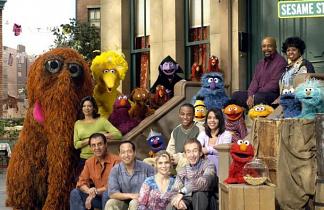In Canada, Sesame Street taught kids more than the ABCs
On Nov. 10, Sesame Street turns 50, and to state the obvious, plenty has changed — even if Big Bird's still learning to count that high. In 1969, kids actually watched a thing called television. Oscar the Grouch? He was orange. And Cookie Monster's diet sure didn't look like Captain Vegetable's.
But over the decades, Sesame Street's educational bent has never wavered, remaining as constant and true as a loyal rubber duckie. Generations of preschoolers have learned their ABCs watching Sesame Street. They've learned about friendship and kindness and the consequences of eating in bed. And for kids growing up on this side of the border, there was a bonus lesson snuck in: Sesame Street taught us how to be Canadian.
W is for what?!
Matthew Hayday is a history professor at the University of Guelph who researches Canadian children's media, and he's studied the show's influence on national identity. In 2016, he published a paper on the topic. (Its spot-on title? "Brought To You by the Letters C,R,T, and C: Sesame Street and Canadian Nationalism.") And the paper charts the twisted journey of how Sesame Street, a staple of just about every North American childhood, even made it to our airwaves.
Surprised by all that? He was, too. So let's rehash a bunch of the details.
It's not like Sesame Street itself is Canadian. Oscar occasionally talks up his family from the Maritimes, but sure as you won't find a Brooklyn brownstone in Vancouver, that bit's obvious. The show's a U.S. creation, developed by the New York–based Children's Television Workshop (CTW), and it was first broadcast on American networks. Indeed, it wouldn't officially hit Canadian TV until Sept. 28, 1970, when CBC and its 32 affiliate stations around the country picked up the show, then billed (in a CBC press release) as a "revolutionary educational series."
Here's some old footage of Lloyd Robertson announcing that news on CBC. (He throws to a clip of O.G. Sesame Street, too — and through 2019 eyes, it's like something from another dimension.)
By 1973, the episodes of Sesame Street appearing on CBC were including Canadian-made content. Segments from the American episodes were redubbed in French. Americanisms were eliminated, replaced with our own linguistic quirks ("zees" were now "zeds," etc.). Original clips were produced, designed to reflect Canadian life. And if you were a toddler any time between the '70s and the '90s, you probably know as much. Surfing between the morning CBC broadcast and the one on PBS (if you happened to have cable), those were the telltale signs distinguishing the show's regional flavour, the dab of maple syrup in Sesame Street's all-American apple pie.
How'd he get to Sesame Street?
Hayday's previously written about language policy and the history of Canada's national character. "It all dovetails around this theme about how Canadian identity is constructed," he says, talking about his work. A few years ago, he was researching the influence of Canadian TV, when his focus turned to homegrown kids' shows. And to him, it seemed few programs, if any, had shaken the definition of "Canadian content" quite like Sesame Street.
In 1968, the year before Sesame Street's debut, the Canadian Radio-television and Telecommunications Commission (CRTC) was established, and with it came some new rules for regulating TV and radio, including quotas for Canadian-made fare. There was already a veritable Tickle Trunk of Canadian kids' shows available. (That old Lloyd Robertson clip even names a bunch of them.) But Sesame Street was an international phenom upon arrival, and people were still desperate to see it in 1971. (To wit: this clip from a 1971 CBC documentary about — you guessed it — Sesame Street.)





